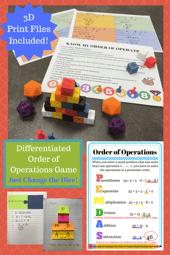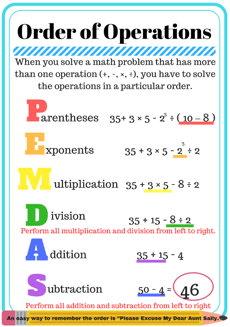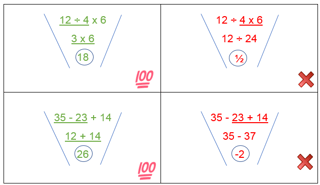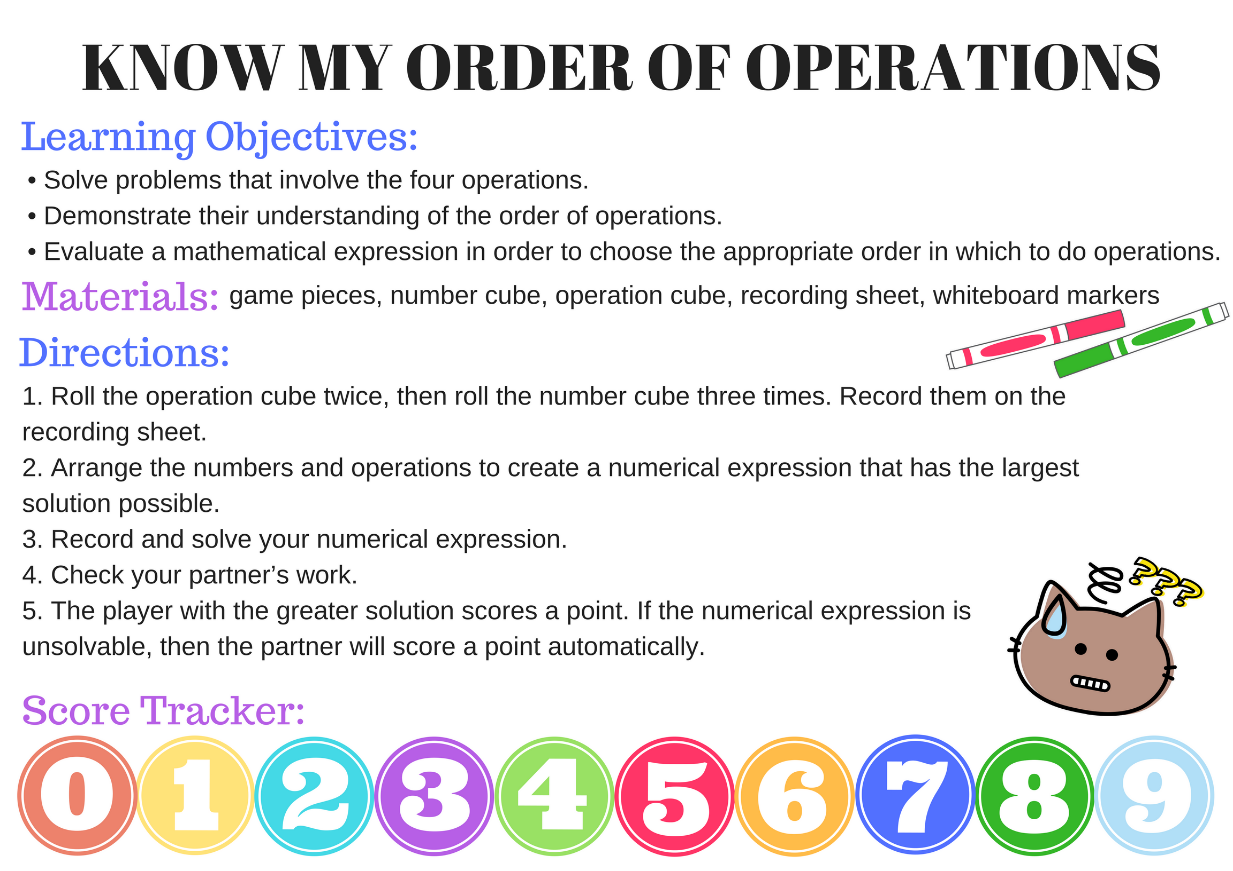 "Class, what is the Order of Operations?" My energetic class of fifth graders shouted out loud, "Please Excuse My Dear Aunt Sally!"
"Class, what is the Order of Operations?" My energetic class of fifth graders shouted out loud, "Please Excuse My Dear Aunt Sally!"
What? Who is Aunt Sally?
When students initially learn how to add, subtract, multiply, and divide, they are taught to perform those skills using two numbers and one operation. As they progress to the next levels, they begin to see numerical expressions with more than one operation and word problems that involve multiple steps. Introduce your students to the Order of Operations - and help them memorize the "PEMDAS" or "Please Excuse My Dear Aunt Sally" acronym as early as third grade. Putting this memory into practice can be more of a challenge - so we've come up with some tips and a fun lesson plan activity for your students to drive the concept home!
What is the Order of Operations, and what are some ideas for teaching it?
"Order of Operations" is an essential mathematical concept covered in upper-elementary grades (3.OA.D.8 and 5.OA.A.1), middle school grades (6.EE.2.C) and is continued through high school algebra and number and quantity standards. Students are expected to apply them in fractions, decimals, and positive and negative integers as well.
 Many use the acronym PEMDAS, or "Please Excuse My Dear Aunt Sally," to help them remember the Order of Operations:
Many use the acronym PEMDAS, or "Please Excuse My Dear Aunt Sally," to help them remember the Order of Operations:
| 1. Parentheses |
Perform operations within parentheses and/or other grouping symbols first. |
| 2. Exponents |
Find the value of all exponential expressions |
| 3. Multiplication & Division |
Perform all multiplication and division in order from left to right. |
| 4. Addition & Subtraction |
Perform all addition and subtraction in order from left to right. |
It's important to note that this acronym can lead to a common misconception by students. Most learners seem to think that all multiplication comes before division and all addition comes before subtraction. For example:

It is critical to ensure students have a strong foundation at an early stage and understand that multiplication/division, and addition/subtraction have equal priority. They should be solved in order from left to right. I find it beneficial to spend extra time demonstrating additional sample problems to the class and providing them opportunities to practice in their interactive notebooks.

Agree/disagree is another great activity for this lesson. It is quick and gets the entire class involved. First, the teacher will display "agree" and "disagree" signs in two places in the classroom. Then they will post a problem on the board and ask students to move to the side of the room showing whether they agree or disagree with the shown answer of the problem. Always have students defend their point of view and how they came up with the answer.
 |
16 - (9 - 2) + 3 x 6 = 27 |
 |
Plan This Activity for your Classroom!
 Know My Order of Operations is a game I put together to benefit multiple grade levels, meeting the needs of various learning abilities. During this game, students will solve mathematical expressions involving the four operations. They will need to choose the appropriate order in which to do operations and demonstrate their understanding of the order of operations.
Know My Order of Operations is a game I put together to benefit multiple grade levels, meeting the needs of various learning abilities. During this game, students will solve mathematical expressions involving the four operations. They will need to choose the appropriate order in which to do operations and demonstrate their understanding of the order of operations.
Students can play this game with up to three partners. Each group will need a number cube/dice, an operation cube (you can 3D print these using the VariQuest Trifecta™ 800!), a game board, whiteboard markers, and a laminated recording sheet per player. This activity can be easily differentiated by adding extra dice, switching out the dice to a 20-sided die, fraction cube, decimals cube, or challenging students to include grouping symbols, exponents, positive and negative integers in their numerical expressions.


Suggestions:
- Utilize this activity during math workshop time. Students can play this game collaboratively with partners, while you meet with a small guided math group.
- Model the activity in front of the class! I usually project the direction page on the board and read the directions aloud with the class. Then I will demonstrate what should be included on the recording sheets by playing a few rounds with the class. Students love "Class vs. Teacher"!
- I always laminate my game boards and recording sheets. Laminated materials allow students to use dry erase markers to write on, and erase effortlessly. Hint: The VariQuest Cold Laminator 2510 is perfect for this!
Plan to use this activity in your classroom? We'd love to see how it went! Post a photo on Twitter and tag @VariQuest and you could be featured in our next blog!
 |
Carman Le is an elementary school educator with experience teaching in multiple school settings, ranging from Title I to STEM magnet to National Blue Ribbon schools. Carman has a master’s degree in teaching (MAT) from the University of North Carolina at Charlotte. She was recognized as a MeckEd Teacher of Excellence in 2015. Carman is passionate about collaborating with teachers and engaging students through hands-on learning and the integration of technology. |
![[Lesson Plan] Order of Operations](https://info.variquest.com/hubfs/Carman/order%20of%20operations/Differentiated%20order%20of%20operations%20game.png)


 "Class, what is the Order of Operations?" My energetic class of fifth graders shouted out loud, "
"Class, what is the Order of Operations?" My energetic class of fifth graders shouted out loud, "






